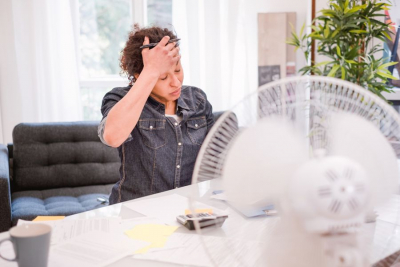Rising temperatures, like those we have experienced this week, usually trigger a question or two about what employers’ responsibilities are when it comes to workplace temperatures. We’re gladly not in the same place we were last year. Under Covid rules, workplace conditions in the warmer weather were exacerbated for many by the requirement to wear PPE.
This year, with Working from Home a much more common feature, the concerns for employers might be more centred around ensuring productivity. Especially when, for home workers in particular, there might be a temptation to make the most of the sunshine at the expense of doing work.
Maximum workplace temperature is a phrase that gets quoted occasionally, but there’s actually no such thing. Instead, the Health and Safety Executive refers to the “thermal comfort” of employees when discussing employers’ legal responsibilities. So, air temperature alone should not be the sole concern. Air flow and humidity are among other factors to consider, as is employees’ own clothing which may be constrained by health and safety requirements.
Employee wellbeing is of course the watchword so taking reasonable steps to fulfil your duty of care should be the default. In most enclosed environments such as an office, factory or warehouse, there are some fairly straightforward measures we can take:
- Ensure airflow through the building is sufficient
- Where possible, open windows and doors or provide fans
- Make drinks readily available and encourage employees to take an extra break
- Consider alternative shift patterns or working hours ie. earlier start and finish times
- Introduce a comfort zone where the temperature can be controlled and allow managed access to it
- Relax the dress code, within reason
- Investigate the possibility of alternative working environments. eg. Another building, outside
- Pay special attention to those at higher risk ie. pregnant or older employees
Some other environments, such as care homes where patient health is of the greatest importance, may require more creativity. Mobile air-conditioning units are much more available these days however the current high cost of electricity and their environmental impact doesn’t always make them the most practical solution.
For those employees who work from home, strictly speaking, a health and safety assessment should already have been undertaken to ensure their work setting meets minimum requirements. It’s likely to be impracticable to make time to appraise every home-worker’s set-up just to account for the arrival of some warmer weather. However, it’s not unreasonable to be aware of certain individuals’ situations that might warrant intervention.
An employee who lives on their own in a flat for example, might find it very difficult to work in their home during spells of oppressive heat. Establishing an alternative place to work, whether that’s back in the office or elsewhere, might be the best move for the employee’s health as well as their productivity.
Let’s also not forget that it’s not just about temperature. The sunshine can also bring with it a higher pollen count, so cases of hayfever, asthma and related illnesses may see an increase for both employees and their children. And we should consider the potential risks of:-
- Dehydration and even Heatstroke
- General irritability leading to conflict with other employees
- Tiredness, resulting in accidents
- Higher stress levels and associated ailments
Whatever the weather, we’re on hand to support with employee issues. Call us on 01452 331331 or e-mail This email address is being protected from spambots. You need JavaScript enabled to view it.



